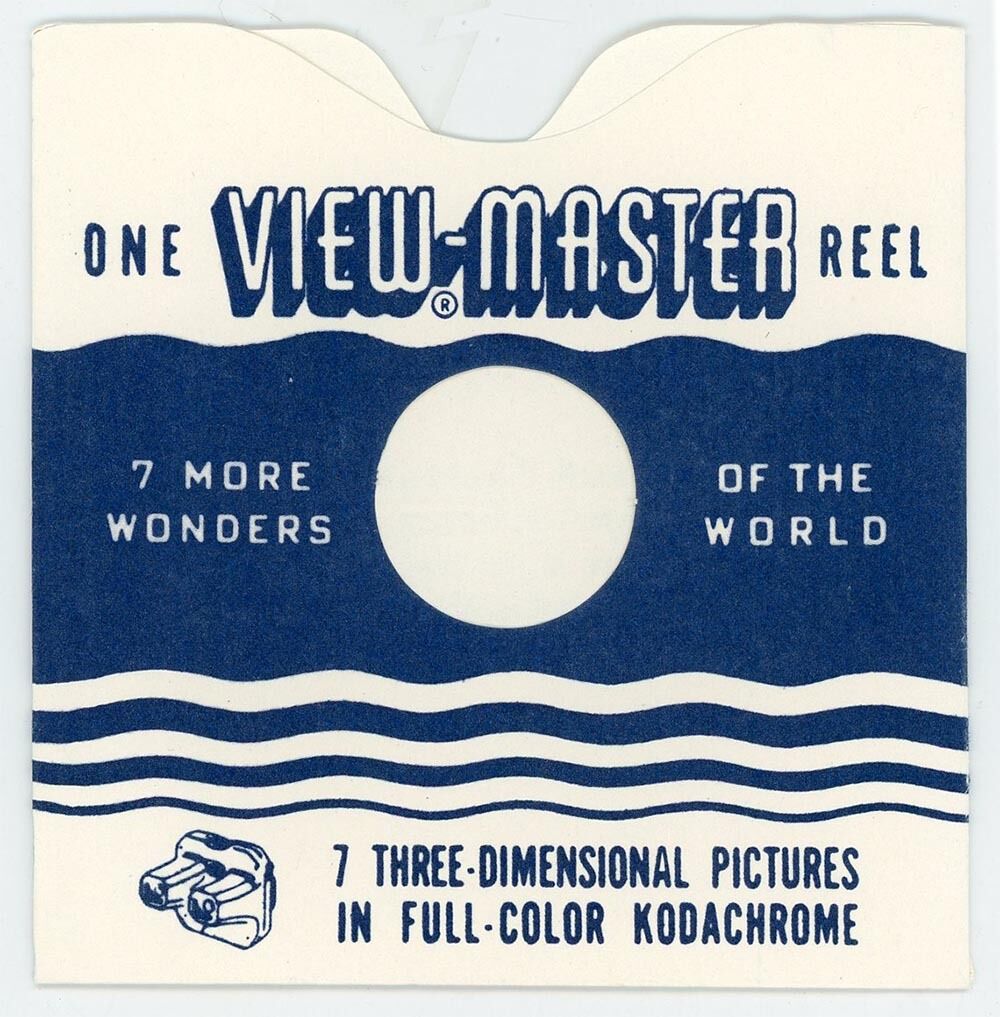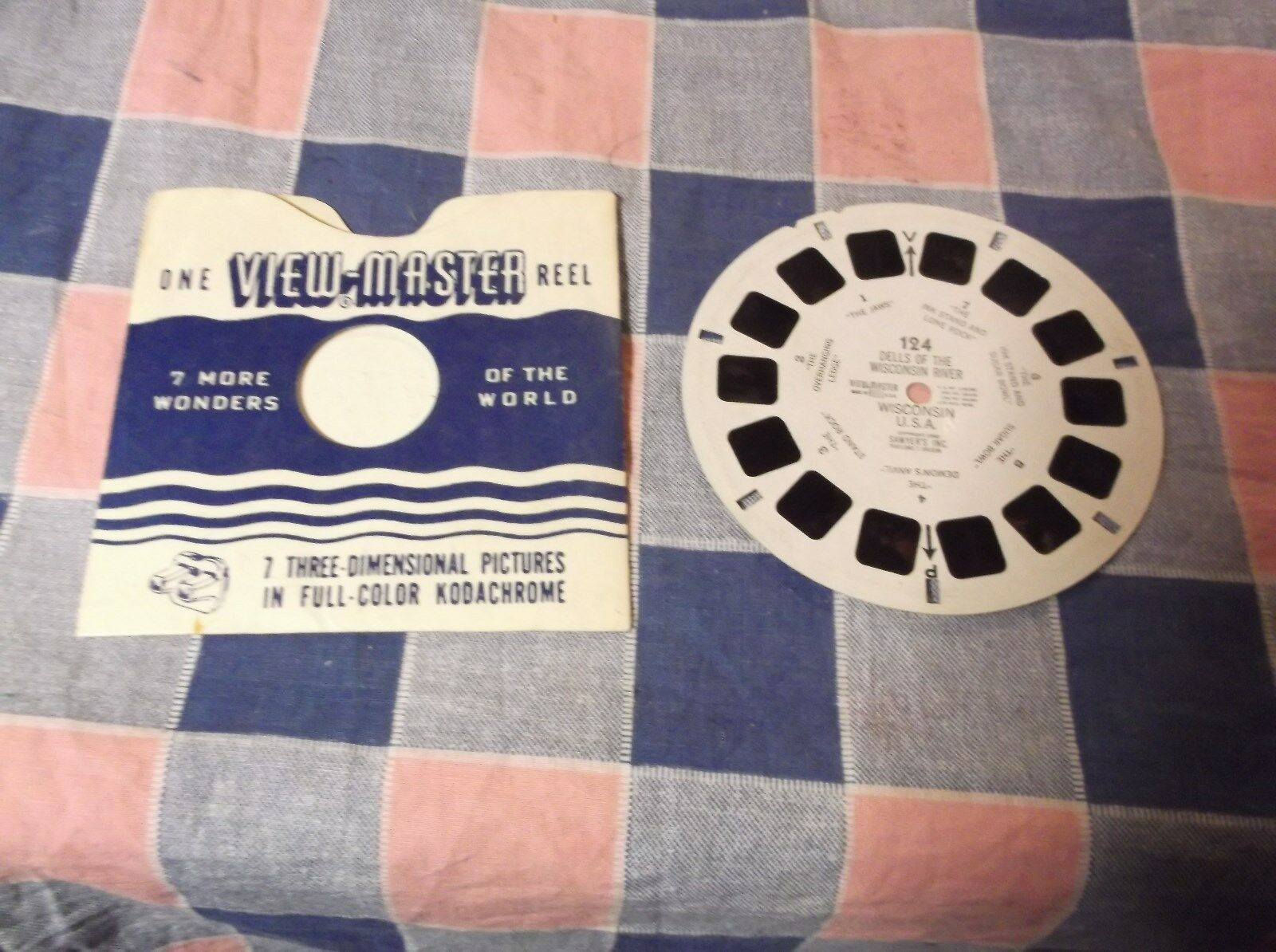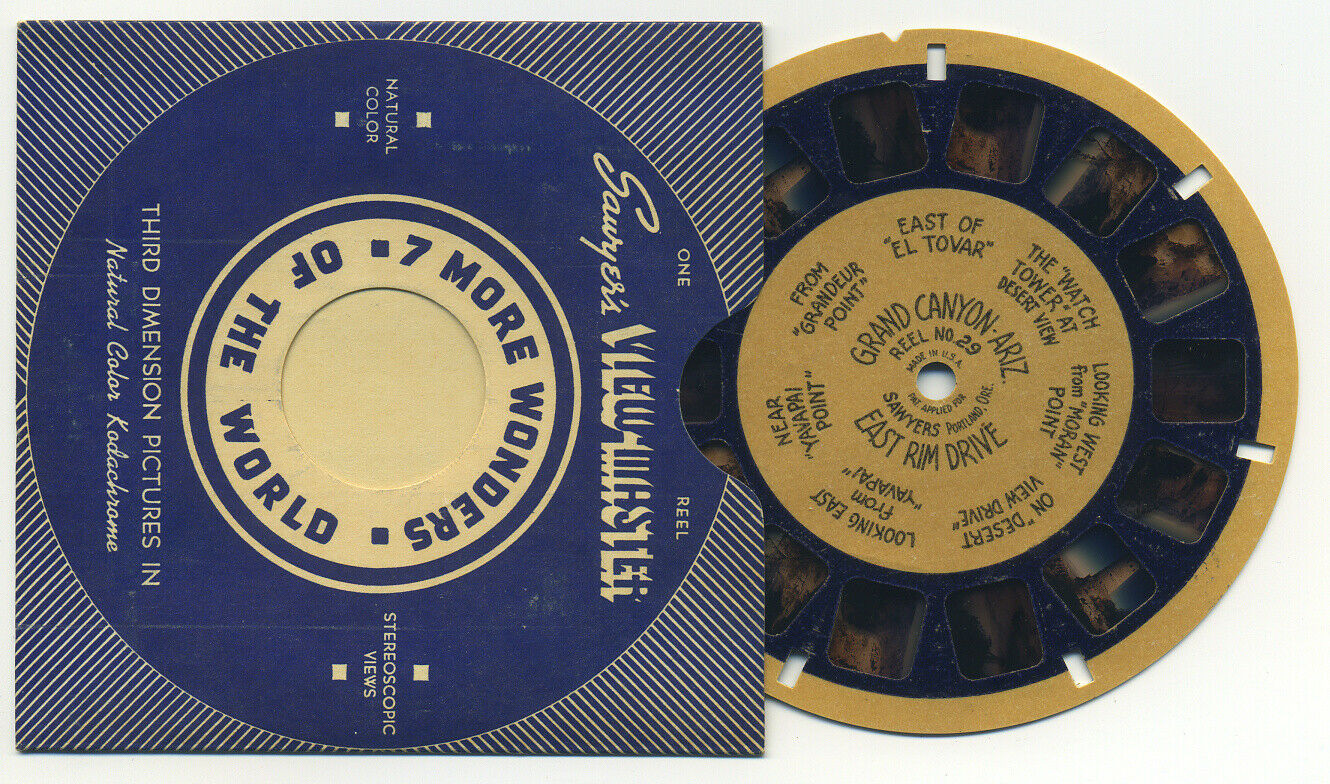-40%
3 Vtg 1940 Black Hills South Dakota Tru-Vue Photos Film Reel Strip View-Master
$ 15.83
- Description
- Size Guide
Description
Set of 3 Vintage 1940 Black Hills South Dakota Tru-Vue 3D Photos Film Reel Strip View-Master__________________________________________________________
I have collected 3D photo memorabilia for 30+ years and it's time that I let some of my prized collectibles go.
This is a rare complete set of three vintage Tru-Vue film strip reels of 3D pictures taken of the Black Hills with all 3 film strips in matching red & silver
boxes. Each film strip reel contains 14 different 3D stereo images for viewing within a Tru-Vue viewer stereoscope (not included). See this historic park
as it once were in these wonderful 3D photos from 75+ years ago! Today these reels are very interesting historic stuff, and all in eye-popping 3D!
Complete sets almost never show up leaving collectors to find each film strip one at a time.
This set contains:
301 Black Hills #1
302 Black Hills #2
303 Black Hills #3
Condition:
The film strip reels
are all in excellent condition and all are in their original red and silver boxes with the original cardboard inserts! I have personally
gone through each film strip reel with white gloves on and inspected every frame and every film cog. All are perfect guaranteed! I would suggest when
viewing these rare films (and all other Tru-Vue films), to pull them slowly through the viewer rather than using the advance lever. This is how the cogs
get torn.
All of the boxes
have slight shelf wear as to be expected as can be seen in my photos, but all flaps are present and there are no tears or crushes
anywhere on the boxes. Each reel is in its original cardboard sleeve. I have tried my best to photograph every aspect of the boxes and film strips.
Please check my pictures out and if you have any questions, please email! Packaging on these will be very secure!
Thanks for looking!
PLEASE CHECK OUT MY OTHER LISTINGS FOR MORE 3D STEREO VIEWERS, VIEWS, and CAMERAS
About The Black Hills from Wikipedia:
The Black Hills (Lakota: Ȟe Sápa; Cheyenne: Moʼȯhta-voʼhonáaeva; Hidatsa: awaxaawi shiibisha) are a small and isolated mountain range rising from
the Great Plains of North America in western South Dakota and extending into Wyoming, United States. Black Elk Peak (formerly known as Harney
Peak), which rises to 7,244 feet (2,208 m), is the range's highest summit. The Black Hills encompass the Black Hills National Forest. The name "Black
Hills" is a translation of the Lakota Pahá Sápa. The hills were so-called because of their dark appearance from a distance, as they were covered in
trees.
Native Americans have a long history in the Black Hills. After conquering the Cheyenne in 1776, the Lakota took over the territory of the Black Hills,
which became central to their culture. In 1868, the U.S. government signed the Fort Laramie Treaty of 1868, establishing the Great Sioux Reservation
west of the Missouri River, and exempting the Black Hills from all white settlement forever. However, when settlers discovered gold there in 1874, as a
result of George Armstrong Custer's Black Hills Expedition, miners swept into the area in a gold rush. The US government took back the Black Hills and
in 1889 reassigned the Lakota, against their wishes, to five smaller reservations in western South Dakota, selling off 9 million acres of their former
land. Unlike most of South Dakota, the Black Hills were settled by European Americans primarily from population centers to the west and south of the
region, as miners flocked there from earlier gold boom locations in Colorado and Montana.
As the economy of the Black Hills has shifted from natural resources (mining and timber) since the late 20th century, the hospitality and tourism
industries have grown to take its place. Locals tend to divide the Black Hills into two areas: "The Southern Hills" and "The Northern Hills". The
Southern Hills is home to Mount Rushmore, Wind Cave National Park, Jewel Cave National Monument, Black Elk Peak (the highest point in the United
States east of the Rockies, formerly known as Harney Peak), Custer State Park (the largest state park in South Dakota), the Crazy Horse Memorial
(the largest sculpture in the world), and the Mammoth Site in Hot Springs, the world’s largest mammoth research facility.
Attractions in the Northern Hills include Spearfish Canyon, historic Deadwood, and the Sturgis Motorcycle Rally, held each August. The first Rally was
held on August 14, 1938 and the 75th Rally in 2015 saw more than 1 million bikers visit the Black Hills. Devils Tower National Monument, located in
the Wyoming Black Hills, is an important nearby attraction and was the United States' first national monument.
Although written history of the region begins with the Sioux domination of the land over the native Arikara tribes, researchers have carbon-dating and
stratigraphic records to analyze the early history of the area. Scientists have been able to utilize carbon-dating to evaluate the age of tools found in
the area, which indicate a human presence that dates as far back as 11,500 BC with the Clovis culture. Stratigraphic records indicate environmental
changes in the land, such as flood and drought patterns. For example, large-scale flooding of the Black Hill basins occurs at a probability rate of 0.01,
making such floods occur once in every 100 years. However, during The Medieval Climate Anomaly, or the Medieval Warm Period, flooding increased
in the basins. A stratigraphic record of the area shows that during this 400-year period, thirteen 100-year floods occurred in four of the region's basins,
while the same four basins from the previous 800 years only experienced nine floods.
The Arikara arrived by AD 1500, followed by the Cheyenne, Crow, Kiowa and Pawnee. The Lakota (also known as Sioux) arrived from Minnesota in
the 18th century and drove out the other tribes, who moved west. They claimed the land, which they called Ȟe Sápa (Black Mountains). The
mountains commonly became known as the Black Hills.
François and Louis de La Vérendrye probably traveled near the Black Hills in 1743. Fur trappers and traders had some dealings with the Native
Americans.
European Americans increasingly encroached on Lakota territory. After defeating the Lakota Sioux, the United States government made peace under
the Fort Laramie Treaty of 1868, establishing the Great Sioux Reservation west of the Missouri River and acknowledging their control of the Teton
range. In this treaty, they protected the Black Hills "forever" from European-American settlement. Both the Sioux and Cheyenne also claimed rights to
the land, saying that in their cultures, it was considered the axis mundi, or sacred center of the world.
Although rumors of gold in the Black Hills had circulated for decades (see Thoen Stone and Pierre-Jean De Smet), it was not until 1874 that Brevet
Major General George Armstrong Custer of the 7th US Cavalry led an expedition there and discovered gold in French Creek. An official announcement
of gold was made by the newspaper reporters accompanying the expedition. The following year, the Newton-Jenney Party conducted the first detailed
survey of the Black Hills. The surveyor for the party, Dr. Valentine McGillycuddy, was the first European American to ascend to the top of Black Elk
Peak. This highest point in the Black Hills is 7,242 feet above sea level.
During the 1875–1878 gold rush, thousands of miners went to the Black Hills; in 1880, the area was the most densely populated part of the Dakota
Territory. Three large towns developed in the Northern Hills: Deadwood, Central City, and Lead. Around these were groups of smaller gold camps,
towns, and villages. Hill City and Custer City sprang up in the Southern Hills. Railroads were quickly constructed to the previously remote area. From
1880 on, the gold mines yielded about ,000,000 annually, and the silver mines about ,000,000 annually.
Copyright © 2018 TDM Inc. The photos and text in this listing are copyrighted. I spend lots of time writing up my descriptions and despise it when un-original losers cut and paste my descriptions in as their own. It is against ebay policy and if you are caught, you will be reported to ebay and could be sued for copyright infringement and damages.













